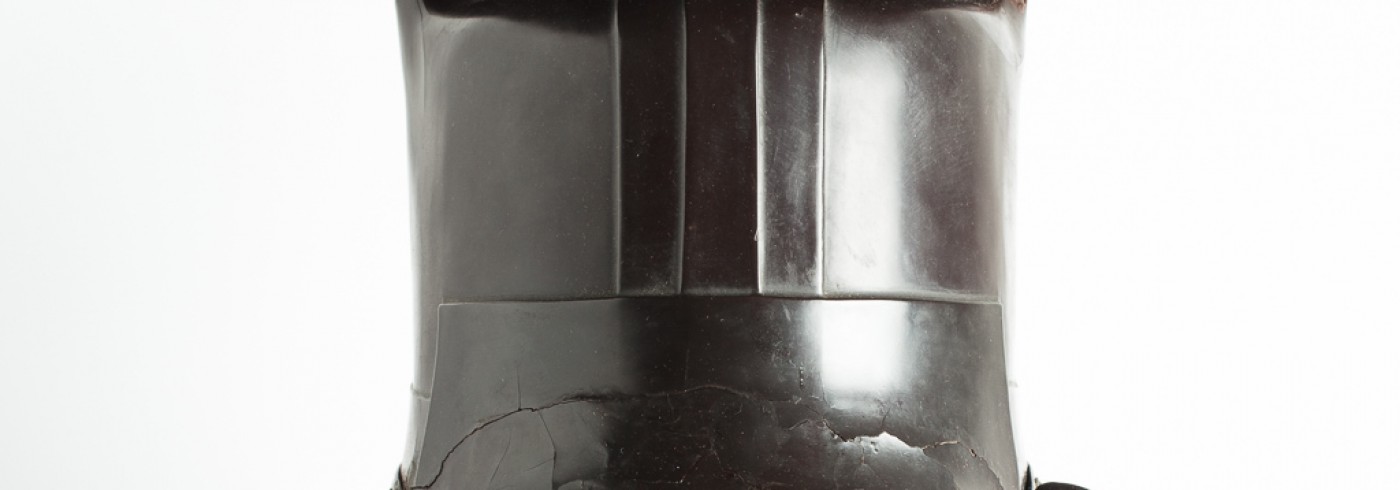
Kakuzukin-nari kawari kabuto

Early Edo Period (1615-1867), 17th Century
Provenance:
Kyoto, Arashiyama Museum
Literature:
Tetsu to urushi no geijutsu - Kyoto Arashiyama Bijutsukan zohinshu, Kyoto, 1986, pag. 26
Certificate: NKBKHK Tokubetsu Kichou Shiryo
The kakuzukin, a type of headgear worn during the early Edo period, was formed by a rectangular cloth folded and sewn along the sides. This kabuto is shaped to resemble this kind of gear and, unlike similar known helmets, it bears in the center a simulation of multiple folds; the inner part, also, is decorated with parallel ridges.The decoration over the iron bowl is made in harikake, papier-maché mixed with lacquer, to be light and solid ath the same time.
Harikake had been used during the Momoyama period (1573-1715), when generals begun to wear large helmets which had to be light at the same time. Kakuzukin-nari helmets are known to bave been a particular favorite of the second Tokugawa shogun, Hidetada (ruled 1605-23) and of hosokawa Tadaoki (1563-1646), lord of Kumamoto domain.
SKU: kab-736-NLo
